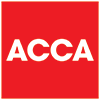What are National Insurance Classes?
There are five separate National Insurance Classes; in this post we’ll examine each, as they cause some confusion! We have purposely avoided including any figures or percentages in this article for longevity. If you’d like to know the current limits and percentages, you can find those here.
Class 1 National Insurance
This is applied to employment income and is collected through a payroll. There are two elements to this type of National Insurance, one paid by the employee and one by the employer.
- Employee contributions are payable at a percentage rate, calculated on any amounts earned above a certain limit, known as the Lower Earnings Limit, each pay cycle up to maximum amount. Beyond that upper level, known as the Upper Earnings Level, additional contributions are payable on all earnings over that amount, calculated at a reduced percentage.
- Employers contributions are payable at a fixed percentage on all earnings beyond the Lower Earnings Limit for each employee.
Class 1A National Insurance
This is effectively additional Employers National insurance paid on benefits provided to employees and is calculated on the benefits listed in the annual P11Ds produced for the company. The total amount due is reported on a summary form called a P11D(b). The amount owing is paid on or before 19th July each year, calculated as a percentage of the value of the benefit. This is not necessarily the same as the cost of the benefit, so if you’re unsure, please ask!
Class 2 National Insurance
If you are self-employed and earning more than a set amount each year there is a small flat rate amount payable for each week of your self-employment. The amount is calculated on your self-assessment tax return and paid at the same time as any income tax is due.
Class 3 National Insurance
These are voluntary contributions and you can pay them to fill any gaps in your National Insurance record to ensure you qualify for the full State Pension.
For example if you have taken time off from work to raise a family or there are similar gaps in your working history, or your self-employed income falls below the minimum threshold for Class 2 contributions.
You can usually only top-up contributions for gaps within the last six years but if this is something you’d like to explore, it’s best to check eligibility with HMRC. The rules do vary depending on age and other circumstances.
Class 4 National Insurance
This is payable by the self-employed if they are earning more than a certain amount a year. The amount is calculated on your self-assessment tax return and paid at the same time as any income tax is due.
National Insurance Classes can be confusing, so if you’re unsure how much you need to pay, or which class you should be paying, please get in touch. We’d be very happy to explain.
Business News
We send regular updates that keep clients aware of changes and suggestions on a wide range of subjects; if you’d like to receive those too, just add your details below and we’ll do the rest! We promise not to bombard you and you can unsubscribe at any time.


